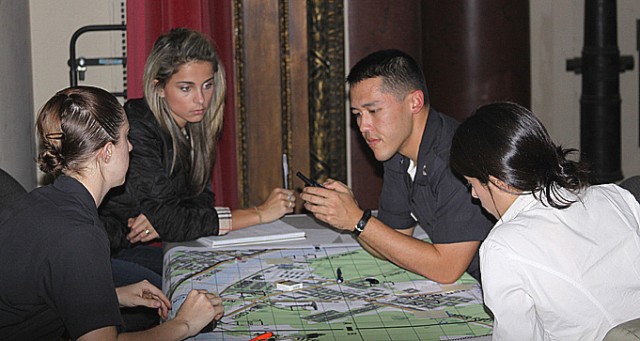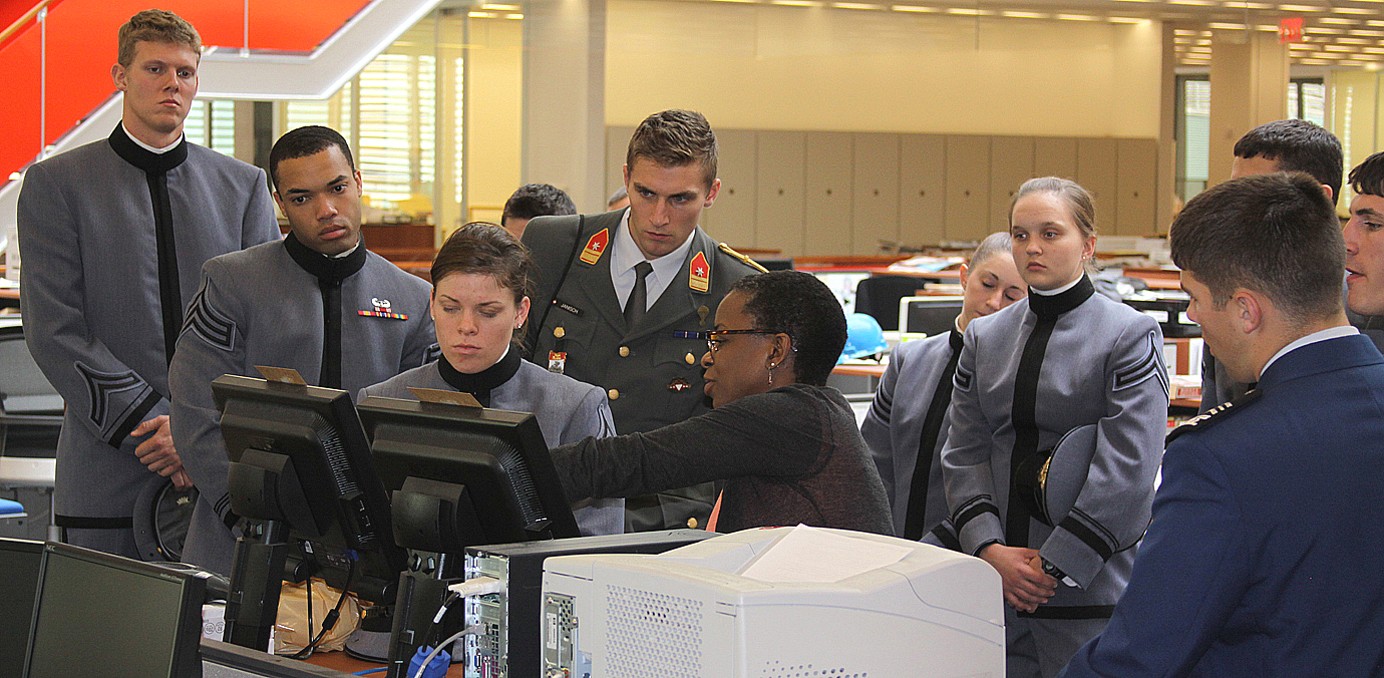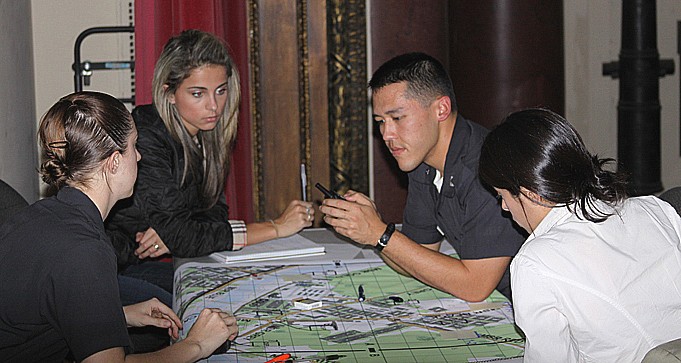Seventeen cadets knew the front page news of the New York Times well before it was delivered to their barracks Nov. 10. On Nov. 9, these cadets, currently enrolled in the Defense and Strategic Studies elective--MS350 Military Communication-were granted special access to the Times' Page One meeting where they watched and listened to various editors pitch stories in hopes the executive editor would grant their stories front page honors.
Cadets also visited Fox News as part of a two-day media immersion experience. The immersion finale was having graduate students from the Arthur L. Carter Journalism Institute of New York University participate in a simulation exercise as embedded reporters at West Point's Warfighting Simulation Center.
Cow David Liem considered the trip to New York well worth his time.
"Given the interrelated nature of modern military and media operations, the lessons I have learned during this block will undoubtedly enhance my effectiveness as an Army officer," he said.
Air Force Academy exchange Cadet Ryan Nichol also had a positive view of the exercise.
"I knew that by coming here, I would have unmatched opportunities, and that is exactly what the New York City media trip and exercise with New York University graduate students was," he said.
The cadets liked the immersion experience. However, Cow Andrew Nicholas wasn't expecting the reaction he got from the reporters he talked to.
"One of the things that surprised me was the overwhelming positive response that the reporters gave when asked about the military," he said.
The cadets heard stories and received advice from experienced reporters who embedded with combat units in Iraq and Afghanistan from both news organizations. The next day they used some of that advice with the NYU students who role played as embedded reporters.
In addition to talking with reporters and producers, the cadets watched a live broadcast of Fox News' America's News Room from the control room. Following the show, they went to the studio floor and met with anchors Juliet Huddy and Bill Hemmer. Hemmer had just returned from Fort Hood where he had been reporting on the Nov. 5 shootings, making his comments very relevant to the cadets.
During their Times visit, they met with James Dao, who also had covered the Fort Hood shooting, and with editors and other reporters with wide-ranging experiences. They heard both good and bad stories from veteran war correspondents.
The highlight of the trip to the Times was sitting in on the Page One meeting with veteran journalist and Executive Editor Bill Keller while all the desk editors gathered and pitched their respective stories to Keller for front page placement.
The next day, these cadets saw the same photograph of Soldiers at Fort Hood running in a unit formation on the front page of their New York Times that they had seen the day prior in that meeting. Very few people have access to that meeting, and, according to one observer, it can change the way one digests the news.
After meeting with the reporters and others, Firstie Kelly Cecil realized that she will need to be proactive with the media after she is commissioned, so the media can give the public accurate information, not speculation.
"The American public is interested in how our nation is fighting its wars and is entitled to form their own personal opinions based on legitimate information relayed back to them via the media. Therefore, it is our job as leaders in the military to ensure members in the media have this access," she said.
The capstone exercise at West Point for the media relations and battlefield communication block included the NYU visitors acting as embeds as cadets conducted a battlefield communication exercise using Virtual Battle Space 2. Some cadets acted as Soldiers on the ground via computers, while others operated separate command posts.
The object was for ground troops to relay messages based on actions on the ground to higher level commands, with the only handheld radios for communication.
As the cadets performed various duties in a platoon, company and battalion CPs or on the computers, they also tried to communicate the issues of the moment accurately with NYU students next to them writing down everything that was happening and asking questions along the way.
Cow Amy Belaus didn't realize how busy she was going to be dealing with an embedded reporter and still doing her job as a platoon leader.
"I had to explain the graphics, the mission and all the military-related components to the operation. While ensuring my reporter was clear on all the facets of the mission, I had to pay attention to the radios I was assigned as well ... I had to be really specific with the reporter when he asked questions. When I would normally reply with military terms, I had to simplify everything I was saying and explain in detail what everything meant," she said.
The cadets learned a lot about communicating on the battlefield and the journalism students learned a lot about the realities of battle and a little about cadets, too.
However, the exercise didn't exactly end Nov. 10. The NYU students still had to file a report and the cadets got to read them.
As the cadets read the 16 articles produced by the NYU students, some found they were portrayed as heroes and others were portrayed as doing their jobs. The NYU students saw the realities and difficulties in communicating on the battlefield. Regardless of their portrayals, the future officers and future journalists learned a little more about how the other operates.
Air Force exchange Cadet Andrew Cavallo reflected on the exercise after reading the reports.
"We were cadets, not yet active duty officers--our counterparts were merely graduate students still learning the art of journalism. It was not until afterward that I realized I was not witnessing current media-military relations but future media-military relations," he said.




Social Sharing